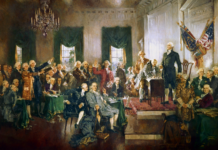I’ve written about jobs, minimum wage, prices, Supply and Demand, and unintended consequences. A close friend asked me to write about the ‘money bubble’. While there are dozens of scholarly Economists out there that can expound greatly about M1 vs M3, etc., I thought I’d take a shot at the currency devaluation we are seeing real time—the Economic definition of ‘inflation’. Let’s dig.
First, let’s define ‘currency’. Currency (coins and paper money) is nothing more than a convenient medium of exchange for work or goods. It replaces barter in civilized areas. Rather than trading two chickens, a pack of garden seeds, and a promise of a percentage of the next harvest, all for your house payment and food at the local grocer, currency makes this trade considerably easier. Prices are expressed in the local currency, work is paid for in that same currency (how much someone is paid for specific work is usually a factor of that labor Supply and Demand), so it simplifies the transaction. It also removes the source of the currency: the seller rarely cares if the currency of the buyer was accumulated via ditch digging, prostitution, or selling grandma’s baked bread. All the seller cares about is the quantity of currency—do you have enough currency to pay the requested price for whatever the seller is trying to sell. And electronic currency (bank balances expressed in digital terms) makes such exchanges even easier, as you do not need to have physical paper money. The overwhelming majority of ‘cash’ in the world is now digital, but the concepts remain unchanged: you had to do something or sell something to make deposits into those accounts, to make withdraws possible.
The VALUE of currency (digital, paper, or coin) is where our current concerns lie. But that requires a bit of history to fully grasp the answers. In the Constitutional Convention of 1787, the Founders specifically gave Congress the enumerated power to ‘to coin Money, regulate the Value thereof, and of foreign Coin, and fix the Standard of Weights and Measures’. For decades, they did just that, expressing the US dollar value based upon a rare commodity: gold. X dollars for Y amount (usually a troy ounce). That arrangement is valuable, since it is a stable valuation. No matter where you are, the reasonable value of the rarity is fairly universal. But this method also has a distinct problem: if your economy (the sum of economic activity) grows too fast, there simply isn’t enough gold to support the economic growth. Consider the situation: if the amount of currency is fixed to gold, but the economy doubles in size, each dollar is TWICE as valuable as before, and there simply aren’t enough physical dollars to go around.
Congress abdicated their responsibility of ‘coin money, regulate the value thereof’ in 1913 by the establishment of the Federal Reserve. While entire books are written on the subject, the summary of the Fed’s role: regulate normal borrowing interest rates by increasing or decreasing the supply of currency available to the regional Fed banks. To call that an oversimplification is like calling a snake a worm, but the importance of the Fed cannot be overstated.
The US mostly abandoned the Gold Standard for its currency during the Great Depression in 1933. In fact, law enacted then made possession of physical gold illegal! The remnants of the Gold Standard in the US were erased via law in 1973. At the moment, there is nothing specifically backing the value of US currency. It is still accepted as a monetary exchange medium—in fact, since the US economy is the largest, by far, in the world, most international commodity prices are expressed in US dollars. Oil, gold, wheat, steel, and pork bellies are all expressed in US dollars, worldwide. This is called the ‘reserve’ currency. Prior to the US, England had the strongest, most stable economy and banking system, so prices were expressed in THEIR currency (British Sterling), until 1944. If another country exceeds the size of the US economy (and maintains a more stable banking system), it could replace the US dollar with its currency (the Chinese Yuan, for example). It is not an easy or quick thing to change the reserve currency, but it has happened.
But back to inflation. Because our currency is not tied to a rare commodity, such as gold, its value can vary wildly over time. Governmental printing of currency, without tying such printing to increased productivity, has the effect of devaluing each existing dollar in use. What could be purchased for $3 now takes $4, etc., because each individual dollar is worth less. We see the effects of inflation when comparing current prices of things to the prices of those same things in the past. Care must be used when doing this comparison, to make sure the goods are the same. Comparing home prices from 1970 to current is a great example: homes in 1970 were considerably different than current. Homes were rarely over 1,500 square feet, didn’t have central heat and air conditioning, didn’t have wall-to-wall carpet, didn’t have energy efficient windows and insulation, and the list goes on. Automobiles have also changed so much that equal comparisons over time are quite challenging. Power steering, power brakes, automatic transmissions, air bags, fancy sound systems, and computerized applications that are commonplace in today’s vehicles simply didn’t exist in the past, or were extremely rare.
To avoid the pitfalls of poorly comparable products, let’s focus on commodities. Gas, lumber, wheat, corn, steel, and the like are similar enough over time to be valid comparisons in prices. And, to be fair, many things factor into a price, other than inflation. Supply and Demand is still king. A disruption in a refinery can limit the amount of gasoline produced, usually resulting in a price spike. Poor weather conditions can raise food prices, regardless of currency value. International relations, including wars and trade wars, can have an adverse effect on everything imported or exported. But when prices increase dramatically, especially over a very short time period (say, a year or two), inflation is a likely culprit. So, let’s look at a few prices of commodities from 2019 (pre-COVID, which hammered Supply/Demand, job market, and everything else) to 2021. Uh Oh. The price of a barrel of crude oil for that time period: January 1, 2019, $45.41. Today: $66.05. The price of a gallon of unleaded gas has risen commensurably: 2019, $2.32; 2021, $3.11. Wheat, per ton: 2019, $509; 2021, $645—and that price is DOWN from the January 2021 peak of $772, since forecasted yields may hit record highs. Steel: 2019, $3609/ton; 2021, $4911/ton. Lumber has increased so much, it may not even be useful as a measurement! In January 2019, the price per 1,000 board feet was $400. It is now $1,400! If that was purely attributable to inflation, ALL prices would’ve tripled in that span! Either way, the trend lines for comparable products are unmistakable: prices are skyrocketing. The value of US currency, separate from all other factors, has shrunk like a poorly-made t-shirt dried at too high a temperature. The COVID-influenced 2020 breaks all models, and maybe the recovery has a major impact on near-term prices. Keep an eye out for the next year or so, to see if our terrible short-term trends continue. We are not immune from the Weimar Republic Hyperinflation factor of 1923: where the currency value was so small, it took a wheelbarrow of paper money to buy a loaf of bread. Buckle up, folks.
Welcome!Log into your account


























[…] from a purely numbers perspective. Back in May, I wrote an article on inflation: https://globallibertymedia.com/inflation/ . While that article explains the economic definition of inflation, and the predictions […]